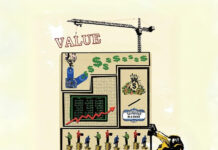By Manfred F. R. Kets de Vries
To become more effective and reflective leaders, executives need to learn to improve their behavioural reactions to difficult situations and develop greater emotional intelligence.
The central theme of this article is to make executives more reflective and effective leaders. To accomplish this objective, transformational experiences are needed. To enable this to happen, to “Know Thyself” becomes an important credo. Many executives seem to be strangers to themselves with often-disastrous consequences. To accomplish transformational experiences, a number of questions need to be addressed: Why have many executives so little self-knowledge? Why do so many executives behave in a self-destructive manner? Why are so many executives unable to get the best out of their people? Why do so many executive teams function poorly? And why do so many organisations have a gulag-like atmosphere? To deal with these various challenges, the article describes the “Challenge of Leadership” program given at INSEAD which has become a base for making executives more “soft-skill” sensitive – “soft skills” being the “hardest skills.” This program (and the ones that have been build on it) has made INSEAD famous for its ability to create transformational experiences.
Introduction
Organisations that take leadership development seriously outperform organisations that ignore this important matter. This holds greater truth today when leaders in this cyber age find themselves under greater (and increasing) pressures in our rapidly changing world. Twenty-five years ago, very little attention was being paid to the idiosyncrasies and irrational processes that make up individual behaviour. Corporations and business schools were preoccupied with models of the rational economic man, not realising that executives are everything but rational decision makers. The emotional aspects of leadership, the importance of more intangible factors such as corporate culture was all but ignored. The emphasis seemed to be on more cognitive-behavioural models to understand leadership behaviour while little or no attention was paid to the subtle, out-of-awareness psychodynamic processes that very much influence the way executives make decisions. These more traditional models will have only limited use as executives today face the added complications of rapidly changing technologies, organisational matrix-like structures, and virtual working teams separated by cultural and geographical boundaries, combined with the difficulties of making decisions when faced with an overload of information. The ability to reinvent oneself in this ever faster changing world has become more important than ever before.
Tipping points
Recently a former participant from one of my “Challenge of Leadership” (COL) programs approached me at a fundraising event in Holland and introduced himself. It had been 15 years since he took my seminar. Initially, I couldn’t place his face. But always being on the lookout for feedback, which I find more valuable many years on, I asked him whether the program had an impact and he told me yes, in fact it had taught him three things. In the first place, it helped him have the courage to quit his job and become an entrepreneur which had made him very wealthy. Secondly, it helped him change his relationship with his son, that improved the quality of his life, and thirdly, he had learned to be less of a micro-manager, to be able to let go, and empower others. In fact, what happened to him during the COL program was the creation of tipping points, the kind of “aha” moments that had given him the insight he needed to change or develop his behaviour in a way that better supported his personal and organisational goals.
[ms-protect-content id=”9932″]We all recognise “Aha!” or “Eureka!” moments, times when we suddenly find the answer to a riddle, or when, out of the blue, we understand the solution to a problem and a light bulb goes on in our head. Tipping point moments occur when worries and concerns – the negative thoughts that may have previously bothered us – suddenly evaporate – when all the pieces of the great puzzle of our life fall into place, a moment of extreme clarity, elation, realisation, and relief. Granted, such moments don’t occur very frequently – and also may not be reported until some time after the event. But when they happen, I have seen people put in place dramatic life changes in ways that do not necessarily fit their previous patterns of behaviour. Their self-limiting beliefs and negative conditioning (products of their past history) unexpectedly evaporate. They suddenly recognise the distorted notions that have kept them from living life to the fullest and how to connect to their authentic self. They have come to realise that they have been stuck in automatic patterns of thinking and behaving. Now, however, they are prepared to look at things in a new, and more constructive way; they are prepared to live life with greater authenticity and purpose.
These tipping point moments do not just come out of the blue; “Aha!” moments grow out of hours of thought, reflection, and preparation. And like chance, they favour only the prepared mind. Although the visible effects of deep change may seem out-of-the-ordinary, they are the result of many small, often unremarkable, preparatory interventions. Small changes combine to produce big changes because they lay down new cognitive, emotive, and behavioural pathways. The visible “effects,” however, seem rapid and dramatic because we don’t see all the work going on behind the scenes, before deep change occurs.
A changing landscape
When I created the “Challenge of Leadership” program I had in the back of my mind the “fantasy” to make INSEAD the foremost business school in the world in “soft skills,” which (when it comes down to it) are the “hardest skills.” Fortunately, INSEAD has supported me in this “fantasy,” realising that it’s critical to its success. Contemporary organisations have come to the same conclusion realising that to get ideas into action necessitates many subtle, out-of-awareness processes when organisations become more matrix-like, run by virtual, highly diverse teams spread around the globe. As the saying goes, vision without action is a hallucination, and execution is where many well-intended decisions get bogged down. To prevent silo formation, to create a true learning organisation, to enable horizontal communication can be an uphill struggle. To make things happen – to arrive at seamless execution – requires a leadership model that is less autocratic but more of an authoritative and networking nature.
As a matter of fact, we have moved from the “Command, Control, Compartmentalization” way of leading organisations to a more Interactive, Informative, and Innovation-oriented model. To be truly effective and have the capability to inspire and empower people at work, today’s organisations need to have leaders who have the emotional intelligence to create meaning, and to get things done. This becomes especially difficult when the members of an organisation are spread across different continents. After all, you can’t email a smile or a handshake. You need to create places of work where people feel comfortable in a network structure; you need to create organisations where people can have courageous conversations – organisations with people that are adaptable, self-aware, collaborative, resilient, and have a systemic orientation. To create these agile organisations we need people that practice true knowledge exchange and will go beyond silo thinking.
Why are so many leaders self-destructive?
As executives climb higher up the corporate ladder these soft skills become even more important. For many, however, to have a more panoramic outlook can be a tough assignment. Ultimately, leaders need to get out of their functional silo to be able to get the best out of people. Unfortunately, many executives fail to rise to the occasion; they simply don’t know how.
The question I have often asked myself 25 years ago, and continue to ask myself today is: Why do so many executives have so little self-knowledge? Why are so many leaders self-destructive? Why are so many executives unable to get the best out of their people? Why are many executives so poor in developing well-functioning teams? Why have so many organisations have a gulag-like quality?
The truth is despite having a greater awareness of their role many successful leaders still share a great sense of anxiety and insecurity. Many leaders are very unaware of the effect their actions have on others. Basically, they have very little idea what they are all about. They seem to be strangers to themselves. And due to their insecurities they may resort to highly dysfunctional behaviour.
Many of these over-achievers are continually asking themselves, am I good enough? Am I up to the job? When will others realise that I shouldn’t have this position in the first place? This is known as the “impostor syndrome.” Some cover their insecurities by becoming more narcissistic in their behaviour to convince themselves and everyone else that they are truly special. Such behaviour contributes to hubris, contributing to irresponsible actions. Some of them even resort to an alpha male, silver backed gorilla style of leadership. While leaders have had to become more sophisticated over the past three decades to improve their horizontal communication to get things done, in times of stress they can regress very quickly and fall back into this kind of autocratic behaviour as a default mechanism.
At the COL program (run over a four week period over a year) I bring very senior executives together to learn from each other, and to help each other become more reflective in action on a day-to-day basis by asking themselves why they are doing what they are doing and how they will be doing it before they act. Through the use of the “life case study” (meaning the participants are the cases), they acquire greater self-awareness. COL follows the old injunction given by the first sage of Greece, Thales of Miletus: “Know Thyself.” By focusing on conscious and unconscious behaviour, as well as rational and irrational action, they learn to prevent irrational and dysfunctional processes from coming to the fore in their companies – and their life in general.
Eventually, the methodology learned from COL contributed to the creation of INSEAD’s Global Leadership Center. It made INSEAD the leading business school in the world in group coaching; and it also created the foundation for the “Executive Master’s in Coaching and Consulting for Change,” a highly successful program now given on two continents. People “transformation” has turned into one of the five principal pillars of excellence that makes INSEAD different from other business schools.
Changing role of leadership
Today’s corporate world is going through a shift not seen since the second industrial revolution. The enhanced capabilities and affordability of technology caused by digital innovation has led to fundamental changes in how business is conducted, organisations are managed, and people behave. As the world is changing, leadership is no longer defined by what a single leader does (the “Great Man” theories) but by the ability to collaborate, motivate and to manage networks. Leadership has become a team sport; leadership behaviour needs to be distributed throughout an organisation.
Leadership success today has to do with the way people think; the way they feel; the way they behave in a responsible manner. This is more than charisma and it is not something that can be learned in three easy steps or over a single program. Strong leadership requires continuous development. As we have all experienced, clever people don’t necessarily become wise. But they can learn how to find ways to cope with stressful experiences by getting to know themselves. It’s always good to keep in mind that leaders are like wine. Some turn out great; others may turn into vinegar!
About the Author
 Manfred Kets de Vries is the Distinguished Professor of Leadership Development and Organizational Change at INSEAD, France, Singapore, and Abu Dhabi. He is also a psychoanalyst. In addition, he is the Chairman of KDVI, a boutique Leadership Development Consulting Firm. He has written more than 40 books and hundreds of articles. The Financial Times, Le Capital, Wirtschaftswoche, and The Economist have judged him as one of the leading thinkers on management.
Manfred Kets de Vries is the Distinguished Professor of Leadership Development and Organizational Change at INSEAD, France, Singapore, and Abu Dhabi. He is also a psychoanalyst. In addition, he is the Chairman of KDVI, a boutique Leadership Development Consulting Firm. He has written more than 40 books and hundreds of articles. The Financial Times, Le Capital, Wirtschaftswoche, and The Economist have judged him as one of the leading thinkers on management.


































